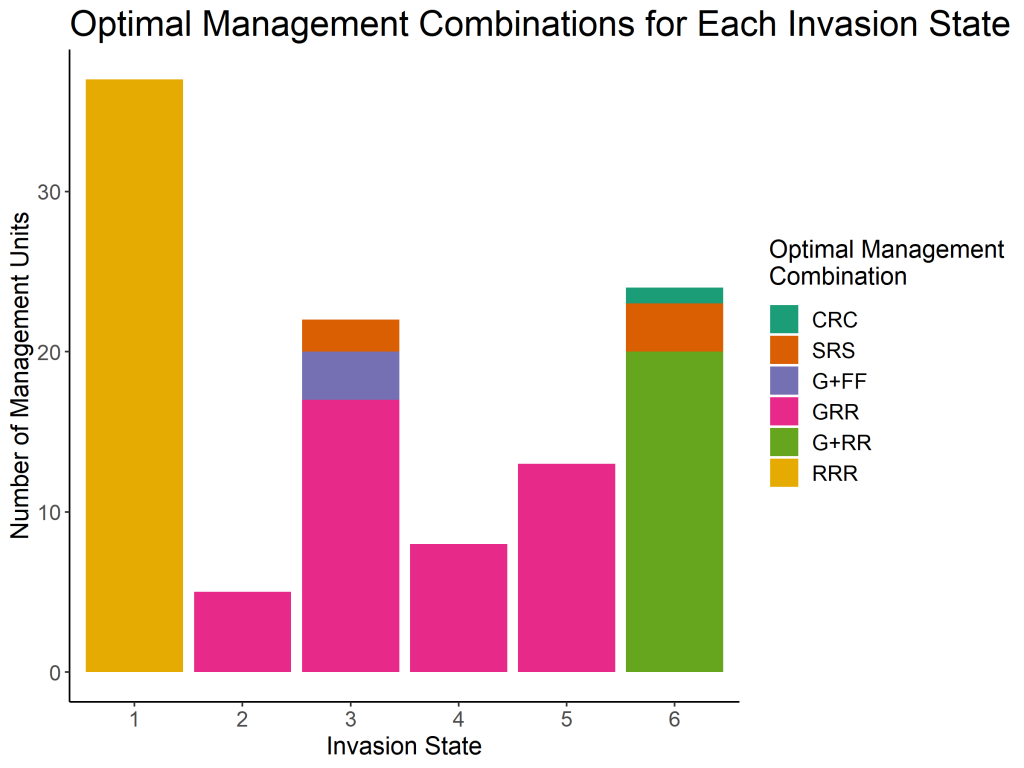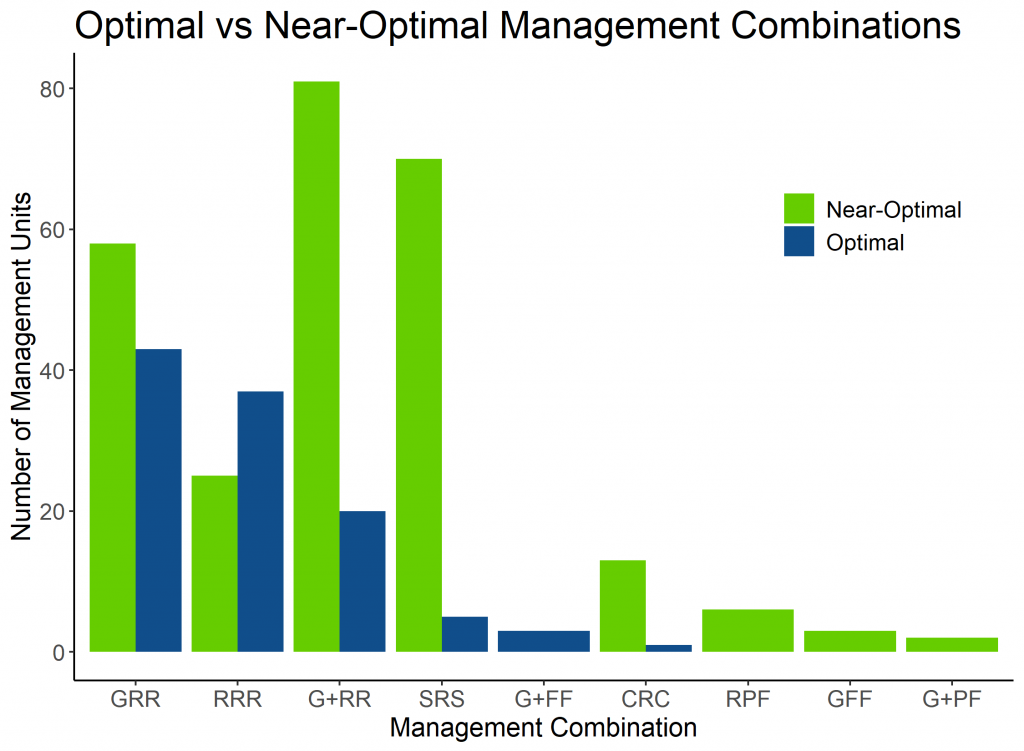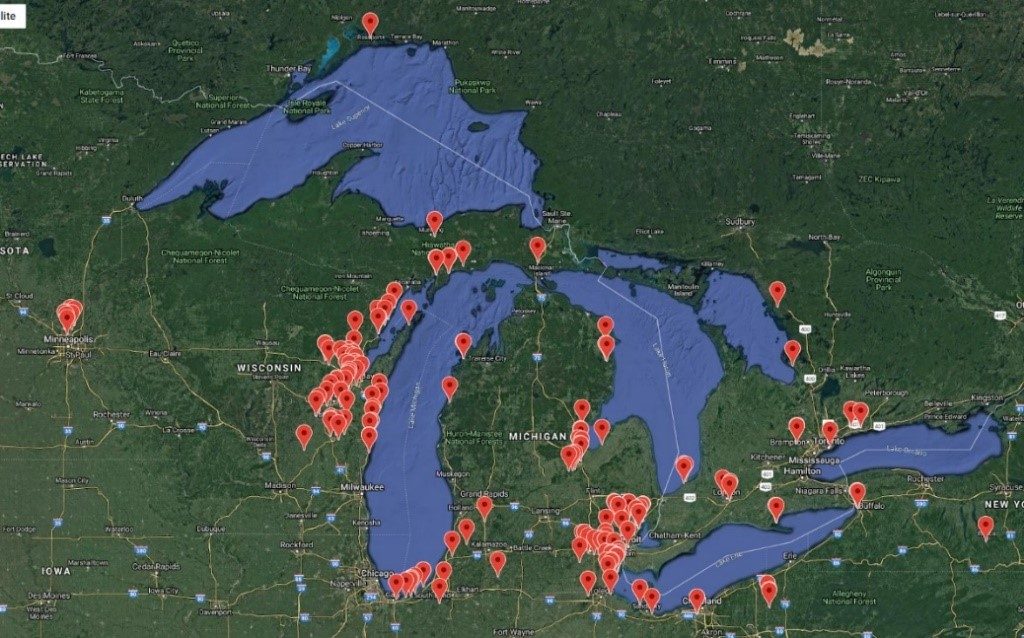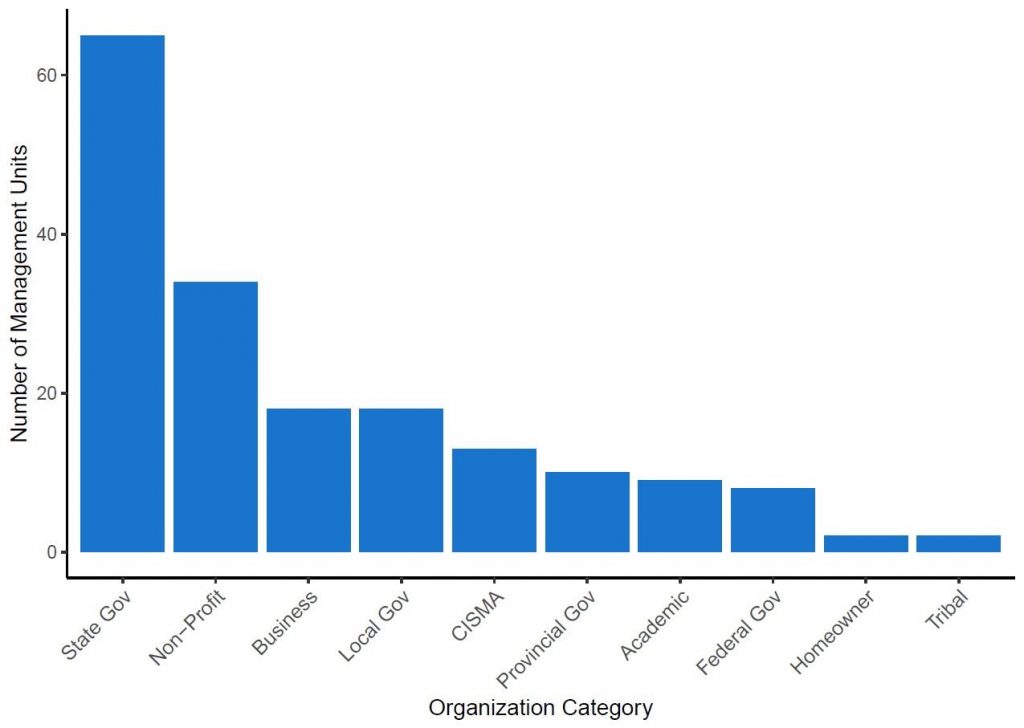October 25, 2019 – Emily Jameson, USGS Student Contractor
As Phragmites have begun senescing, the PAMF team has been busy crunching all the data from the 2018/19 participation cycle and providing guidance to active participants. Thank you to all the participants who submitted data for this past participation cycle – we are excited to share what we have learned. Any way you slice and dice the numbers, it was a good year for PAMF participants!
Management Units
- PAMF gained 18 new participants the past cycle, who enrolled a total of 73 new management units (MUs). This brings the total number of management units up to 180 enrolled by 60 managers. We are excited to welcome the newest members and include their data in the collective learning process!
- A whopping 420 acres (170 ha) are enrolled in PAMF across the Great Lakes basin with even more Phragmites treatment occurring throughout the basin by PAMF managers (as many managers don’t enroll all Phragmites sites they manage).
- Management units range in size from less than 0.1 acres to over 50 acres (0.04 – 21.7 ha) with most being under a quarter of an acre (0.1 ha). Management units of all sizes are welcome in PAMF – deciding the size and shape of your MU is up to the managers and their capabilities.
Guidance
- PAMF provided data-driven guidance to 109 management units in August 2019. Participants can view their management guidance on the Web Hub under the “View Management Guidance” tab.
- Most of the highly invaded management units in invasion state 6 (see our blog post to learn more about the six invasion states) received optimal guidance to apply Glyphosate+ (a mixture of glyphosate and imazapyr or imazamox) during the translocating phase and then Rest during the dormant and growing phases. For MUs in invasion states 2-5, the PAMF model most commonly suggested applying Glyphosate during the translocating phase combined with Rest during the remainder of the cycle. Finally, the model suggested Resting state 1 management units the entire cycle as the optimal management combination (Figures 1 and 2). Restrictions on some management activities led to alternative optimal guidance for some MUs. As more data are submitted, the model will learn and continue to refine its effective and efficient management guidance.

Figure 1: Model-derived optimal management combinations broken down by invasion state. The x-axis labels are the six invasion states. Colors represent optimal guidance combinations made up of three management actions (see management action key). For example, pink indicates the Glyphosate, Rest, Rest combination which was the most common guidance for states 2-5.


Figure 2: The frequency of optimal and near-optimal management combinations. Each management unit only receives one optimal combination but may receive multiple near-optimal combinations. Near-optimal guidance is expected to perform nearly as well when implemented.
Geographic Distribution
- At the end of the 2018/19 cycle, managers from Ontario and all the Great Lakes States, except for Illinois, have enrolled management units with PAMF (Figure 3). PAMF also has units enrolled from all five Great Lakes’ watersheds, with Lake Michigan and Lake Erie having the greatest representation.
- Seven PAMF training sessions were hosted in 6 states this past spring. If you are interested in organizing a training session in 2020 for managers in your area, please contact our coordinator at pamf@glc.org to learn more.

Figure 3: Management unit distribution throughout the Great Lakes basin. Each point indicates the location of a management unit that is contributing to the collective learning process.
Participants and Progress
- Of the 109 management units that submitted monitoring reports in 2019, 34% fall into state 1, the lowest invasion state. This is exciting news for the “phight” against Phragmites! Keep up the great work!
- PAMF participants represent Phragmites management conducted on all levels, from private homeowners to federal government agencies. The majority of PAMF management units are managed by state agencies and non-profits (Figure 4).

Figure 4: The frequency of enrolled management units within different categories of participant-affiliated organizations. Check out the “Who’s PAMFing” tab on the Web Hub to connect with other managers near you!
Thank you to all the Phragmites managers and PAMF participants. Without your contributions, progress towards effective and efficient Phragmites management would come to a screeching halt. An influx of new managers and the continued support of veteran participants led to a successful cycle for the program. If you are currently managing Phragmites but are not a PAMF participant, consider enrolling a site today so you too can help improve Phragmites management across the Great Lakes basin. By enrolling you will contribute to the collective learning process and receive data-driven management guidance. Contact the PAMF coordinator today at PAMF@glc.org for more information on how to get started.
